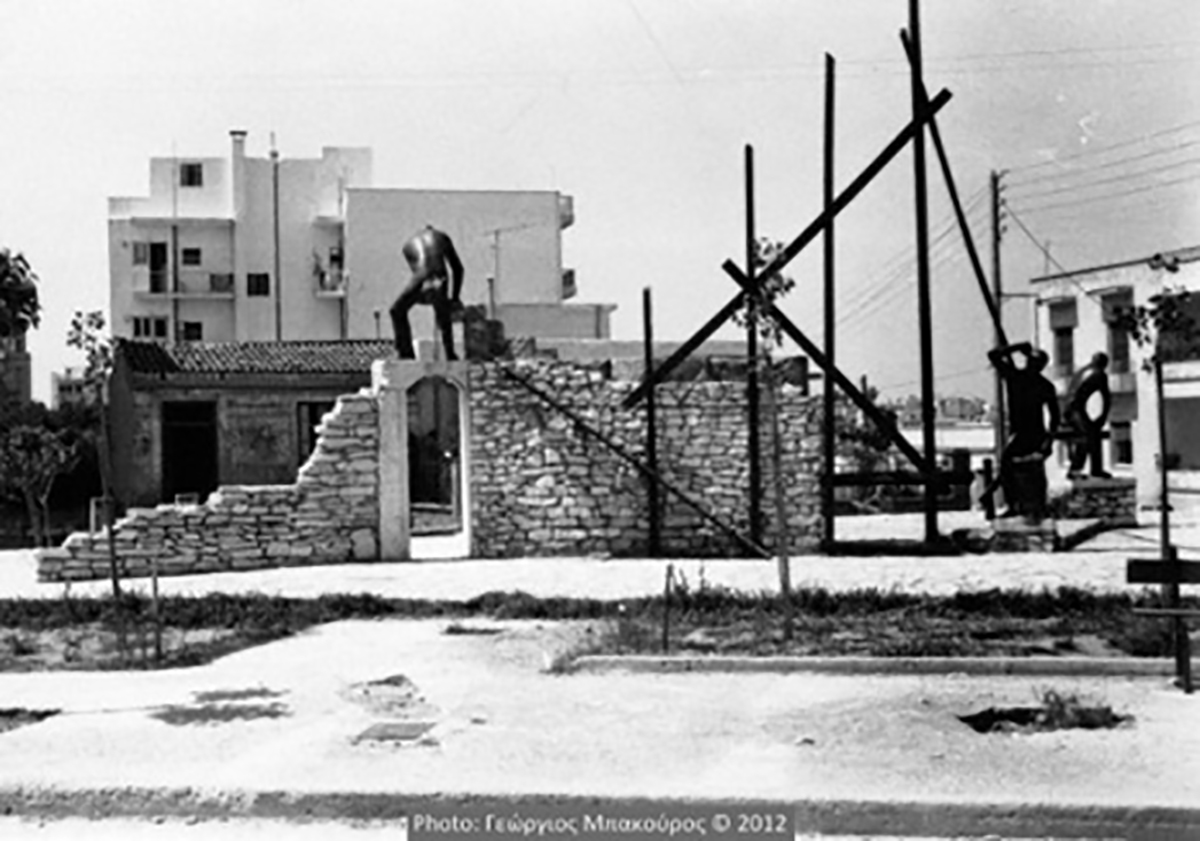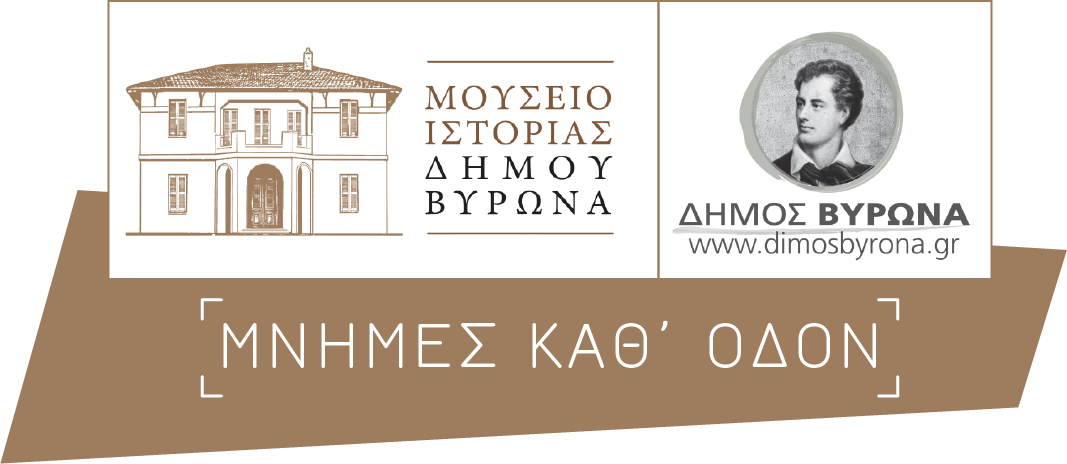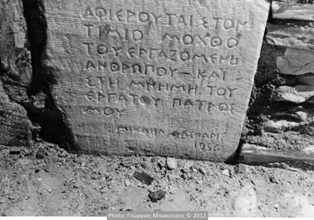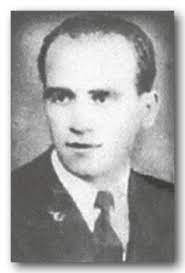"Statues"
Dimitris Varoutidis' square

The present-day Dimitris Varoutidis' square (formerly Analipseos Square) constitutes an important historic landmark of Vyronas. The main reason is that it hosts parts of a large sculptural monument called "Monument of Labour" or "Monument of the lost homelands". It was created by the acclaimed sculptor Kostas Klouvatos. The monument represented working class people, a carpenter, a mason and an ironsmith. These figures ("statues") represented the working class as well as the effort of the settlement of Vyronas who built their town with great efforts. The monument had been erected when mayor of Vyronas was Angelos Konstantilieris (1951-1959). Apart from its symbolic value, it also acquired a political significance, particularly during the harsh aftermath period of WWII. Hence, it was removed during the junta period (1967-74). Alhough it was restituted in 1975, it had been severly damaged and the monument never acquired its initial form.
The square, however, was important both because is dedicated to a national resistance hero, inhabitant of Vyronas and member of EPON and ELAS, who was killed in 1944, and because it preserves some parts of an initially great work of art.
- The dedicatory inscription of the Monument of Work or Monument of the Lost Homelands
- The sculptor Kostas Klouvatos
- The National Resistance hero Dimitris Varoutidis
Additional information
Dimitris Varoutidis was born in Asia Minor in 1920 and came to Greece when he was two years old, initially settling in Lesvos and later on in Vyronas. In the period of the German Occupation he became a member of EPON (Revolutionary Organization of Youth) and of ELAS (National Popular Liberation Army). On the 9th of August 1944, two days only after the Blockade of Vyronas, a summit of EPON was taking place in Daphne (Katsipodi). The Germans blockaded the area and trapped several members of the resistance as well as inhabitants of the area. When a masked denouncer recognised him, Varoutidis grabbed the hood of his head and spitted on his face. This resulted in his immediate execution.
Kostas Klouvatos was born in 1921 and studied at the School of Fine Arts of Athens and at the sculpture atelier of Th. Apartis. He was the artist who brought to Greece the notion of "Space-plastic", i.e. the creation of sculpted complexes which shape the identity of the spaces where they are exhibited. He was a founding member of the "Team A", consisting of young artists who wanted to bring art closer to the public, without the barricades of political identities and other segregations. Among his works count several heroic memorials and statues of important people. The Monument of Labour or Monument of the Lost Homelands was one of his most important creations in Athens.
The so-called "statues" today, had been funded by the Greek-American and originating from Smyrna businessman Michalis Laskaris. They were called "Monument of the Lost Homelands", as in their original form the base of the sculpted complex comprised four bronze slabs, where there were depicted in relief scenes of the odyssey of the Asia Minor Greeks and their resettlement in Greece (tetralogy: Felicity-Destruction - Refugees- Rehabilitation). The donor had dedicated the monument to the "honest labour of the working class people and to the memory of his father, who was a worker". Unfortunately, when the monument was withdrawn, these bronze relief slabs were destroyed and the inscriptions suffered serious damage. When Mayor D. Konstantilieris reinstated it within the grove of the Holy Trinity, the sculptures were vandalised.
Finally, they wree placed on Analipseos Square (now Dimitris Varoutidis' square) but the marks of the vandalism are still evident.



